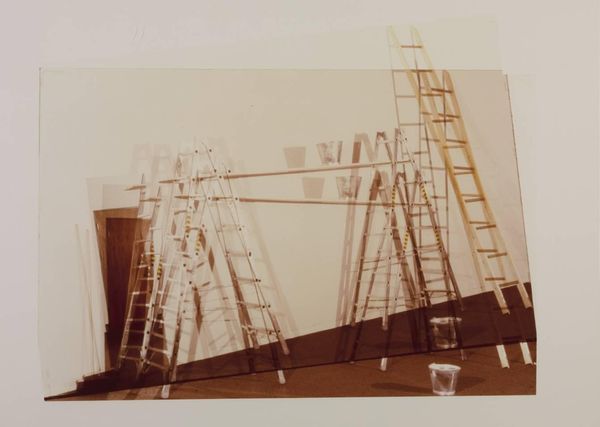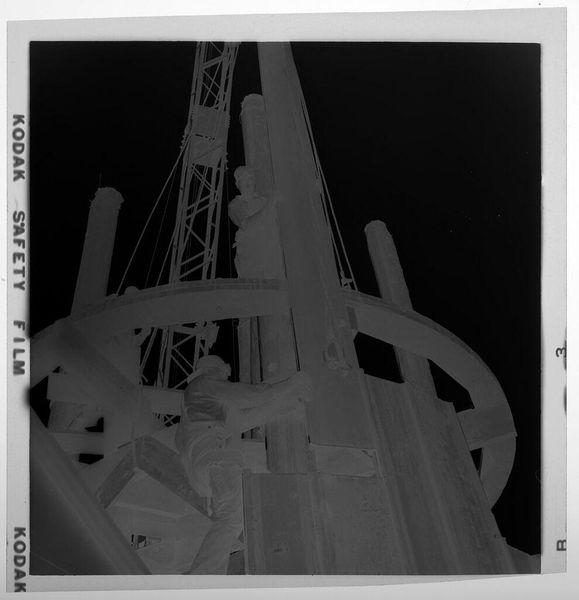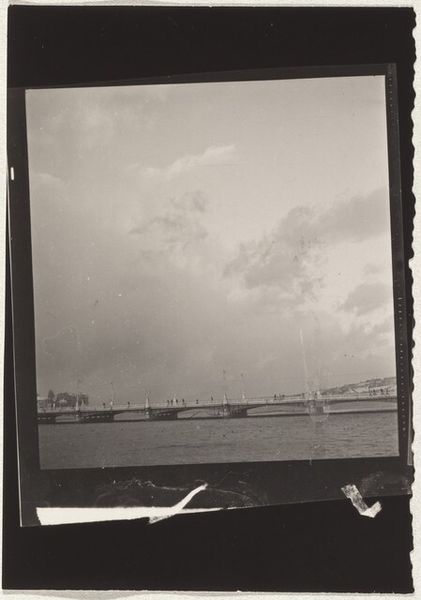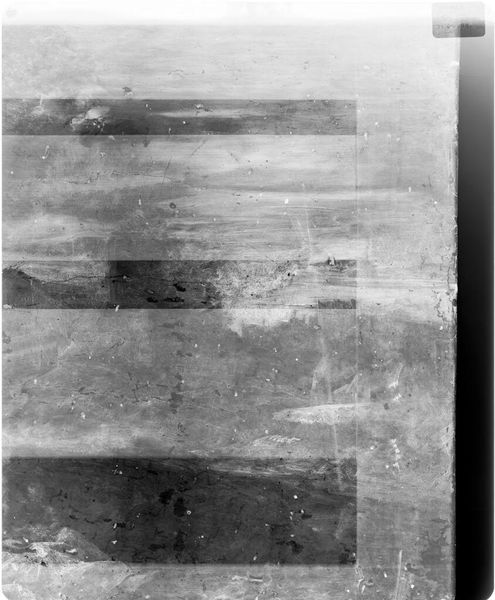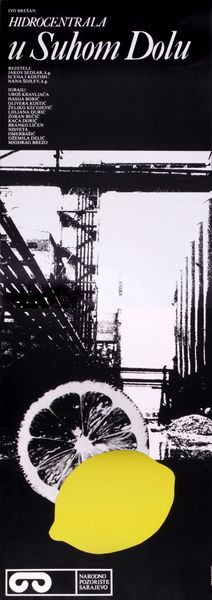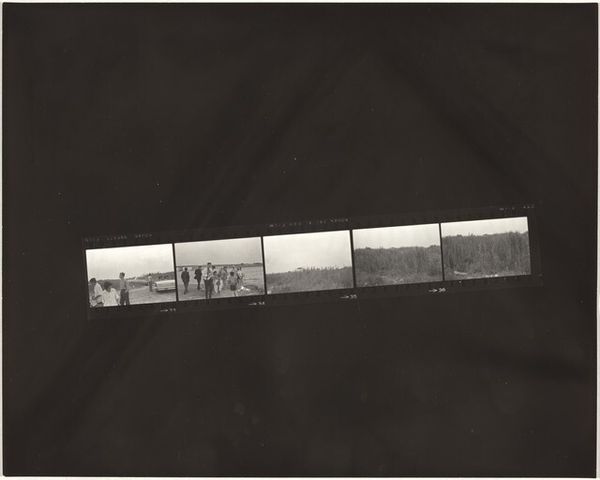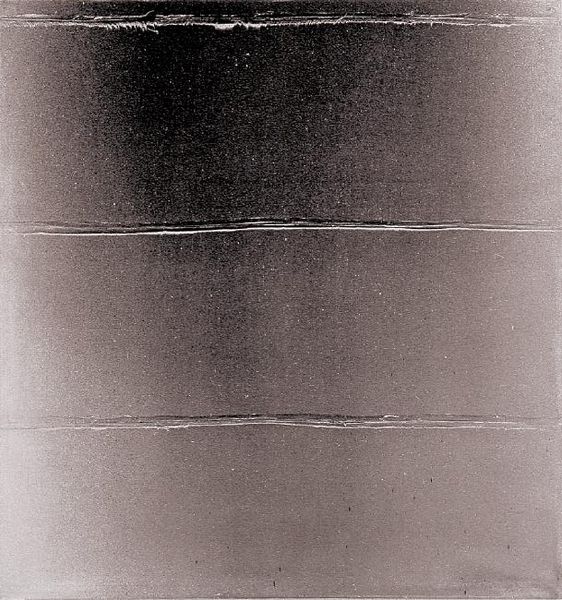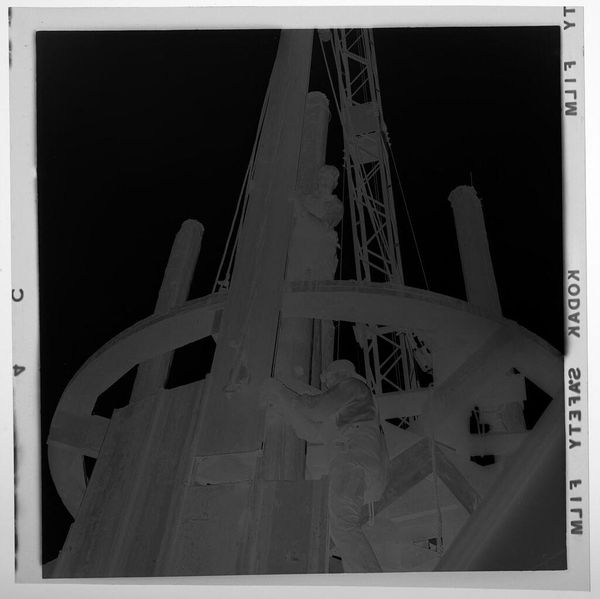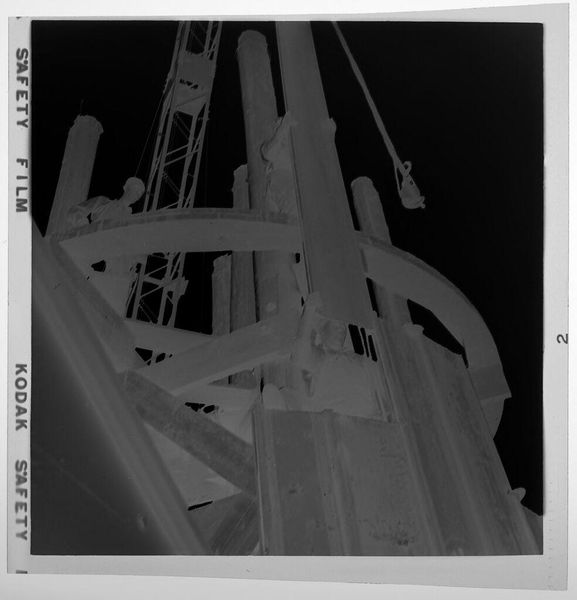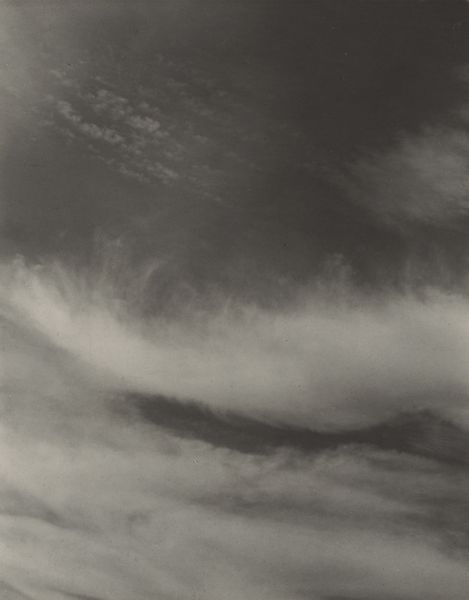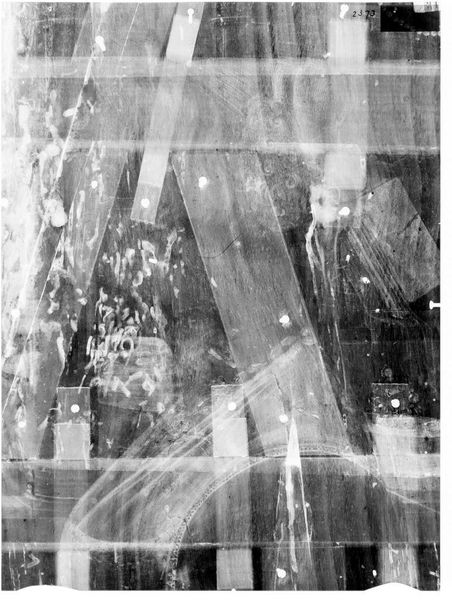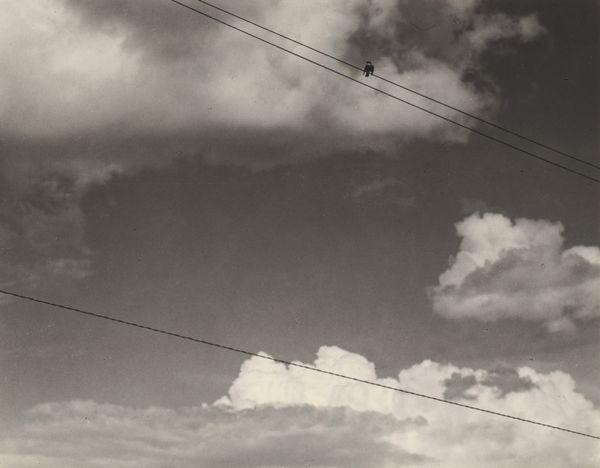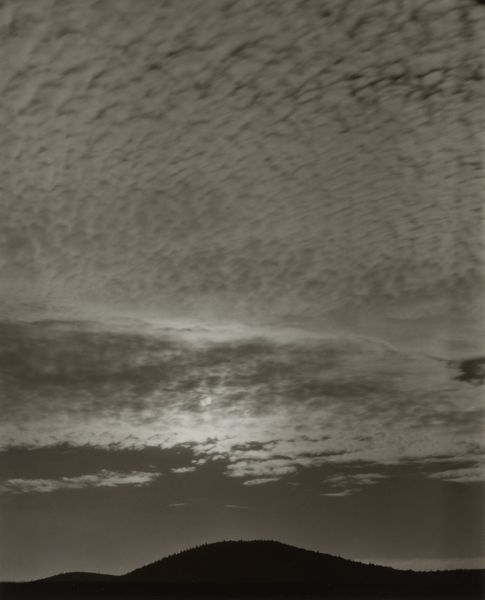
photography, photomontage, gelatin-silver-print
#
monotone colours
#
monochromatic
#
black and white photography
#
landscape
#
black and white format
#
monochrome colours
#
photography
#
machine
#
geometric
#
photomontage
#
black and white
#
gelatin-silver-print
#
monochrome photography
#
monochrome
#
grey scale mode
Dimensions: image: 23.7 × 18.3 cm (9 5/16 × 7 3/16 in.)
Copyright: National Gallery of Art: CC0 1.0
Curator: Here we have Nathan Lerner's "Multiple Exposure," a gelatin silver print, the date of which is unfortunately unknown. What catches your eye first? Editor: Definitely the interplay of textures and forms – the rigid geometry of that radio tower against the softer, blurred suggestion of a figure layered into the landscape. It feels almost like a ghost story, or a half-remembered dream. Curator: Yes, there's a melancholic ambiguity. It's photomontage, expertly executed. The technical precision with which Lerner marries these disparate images—an industrial structure, the vague crowd scene below, the haunting face—creates something entirely new. I find it both unsettling and evocative. Editor: The monochrome palette also really enhances that feeling, focusing our attention on the tonal contrasts and the gritty texture of the gelatin silver print. Speaking of which, thinking about gelatin and silver and light sensitive paper, the labour involved is substantial in photographic processes like these. Each print made with that much tactile work and with intention. Curator: Precisely. You know, when I look at the tower bisecting the face, I am struck by a sense of intrusion, a visual interruption—like modernity clashing with memory, the grid imposed on the organic. And how that clashes and sits against the image. Editor: Intrusion is right. Given Lerner's later work with design and commercial photography, I wonder about the societal impact of such structures—the towers as agents of communication and control. Its physical presence dominates that person and the ground they stand on. Curator: A keen point. I find the lack of specific date intriguing. Is it timeless, or perhaps hinting at a particular moment of industrial expansion, an unspoken narrative held within the silver grains? It feels less about definitive answers and more about fostering an atmospheric interrogation. Editor: I agree completely, and it invites the viewer to ponder the impact of industrial elements not just on a landscape, but on the individuals who inhabit it and, perhaps more importantly, on our collective unconscious. Curator: Lerner asks us to see—to truly see—the multilayered realities we often overlook, the tensions inherent in our manufactured landscapes. It remains a relevant prompt, even now. Editor: Definitely food for thought. Seeing the layers of both time, intention, and medium opens our eyes to considering the artistic intention.
Comments
No comments
Be the first to comment and join the conversation on the ultimate creative platform.
